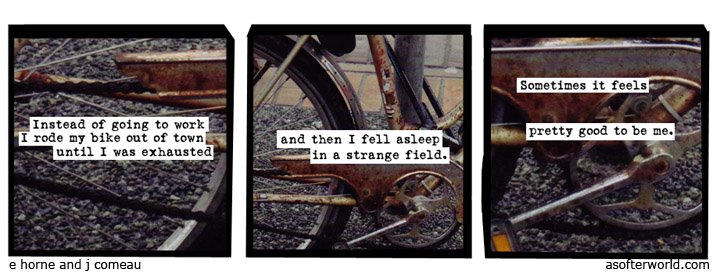
AFTER:

ONE OF MANY URBAN NEIGHBORHOOD ROOSTERS (this is next door to my house):

Here is a write-up on my neighborhood. I'm growing to truly love it here :)
It's a place full of history.
It's a place full of nightlife.
It's a place called Ybor City.
You'll know you've entered Ybor City when the streets turn from asphalt to brick and the lampposts from concrete to ornate wrought iron. When the atmosphere turns from button-down to bottoms up. No sterile high-rises here. Ybor City's buildings bespeak a bygone era when craftsmen prided themselves on quality workmanship. At every turn are elements of classical and Mediterranean architecture.
This multicultural enclave started out as 40 acres ofswamp and scrub northeast of Tampa. The name Ybor (pronounced EE-bore) belongs to one its founders. In 1886 cigarmakers Vicente Martinez-Ybor and Ignacio Haya moved their cigar factories from Key West to Tampa.
Tampa had everything the cigarmakers needed: a railroad, a port and a warm climate that provided a natural humidor for the tobacco leaf.
Once the cigarmaking was under way, Ybor City became home to Cuban, Spanish and Italian immigrants who worked in more than 140 cigar factories in and around the area, producing 250-million cigars a year.
For more than half a century, Ybor City was the "Cigar Capital of the World." While the cigar industry was thriving, Ybor City was alive and kicking with Latin culture and language.
Residents depended on clubs such as the Centro Espanol, Centro Asturiano and Unione Italiana for all their medical and social needs. Many of those buildings have been renovated and are in use today.
Out on La Septima Avenida (Seventh Avenue), trolly cars carried residents across town, boys sold deviled crabs on the corner and everyone was reading the latest edition of La Gaceta, Ybor's tri-lingual newspaper that's still in print today.
Many cigar workers lived in and owned small homes called casitas. Three of the casitas have been restored and are part of the Ybor City State Museum at 1818 Ninth Ave. The museum also offers walking tours of Ybor City.
In the early 1990s, the area beagan attracting many artistic types and nightclubs. In the late 1990's land developers moved in, seeking to capitalize upon the perception of Ybor City as a cutting edge cultural area. Many upscale bars and a trendy shopping complex called Centro Ybor have sprung up.
Ybor City is now undergoing residential redevelopment and infill. The neighorhoods surrounding 7th Avenue are beginning to transform with restoration of historic homes and the addition of modern lofts and townhomes.
Ybor City is a National Historic Landmark District, one of only three in Florida.
The city's past is still very much a part of the present.


2 comments:
I LOVE IT! Your house is SO cute. The colors are awesome! That must have taken FOREVER! What a cool little town too! It sounds like your settling in, just fine!
After having read that I should issue a warning: I might show up on your doorstep, baby in tow, and request to spend an inordinate amount of time sleeping on your sofa and exploring your new barrio.
The house is beautiful, you are so lucky!
Post a Comment